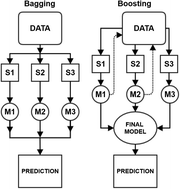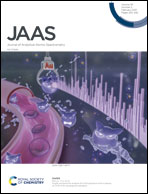Comparison of machine learning techniques to optimize the analysis of plutonium surrogate material via a portable LIBS device
Abstract
The utilization of machine learning techniques has become commonplace in the analysis of optical emission spectra. These methods are often limited to variants of principal components analysis (PCA), partial-least squares (PLS), and artificial neural networks (ANNs). A plethora of other techniques exist and are well established in the world of data science, yet are seldom investigated for their use in spectroscopic problems. In this study, machine learning techniques were used to analyze optical emission spectra of laser-induced plasma from ceria pellets doped with silicon in order to predict silicon content. A boosted regression ensemble model was created, and its predictive accuracy was compared to that of traditional PCA, PLS, and ANN regression models. Boosted regression tree ensembles yielded fits with R-squared (R2) values as high as 0.964 and mean-squared errors of prediction (MSEPs) as low as 0.074, providing the most accurate predictive model. Neural networks performed with slightly lower R2 values and higher MSEPs compared to the ensemble methods, thus indicating susceptibility to overfitting.



 Please wait while we load your content...
Please wait while we load your content...